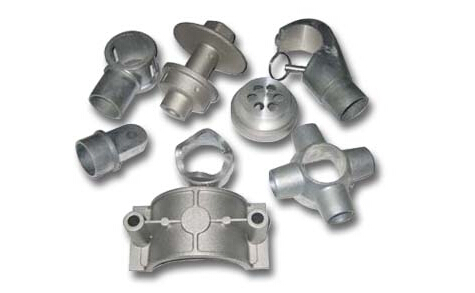Investment casting, also known as lost-wax casting or precision casting, is a manufacturing process that can produce complex metal parts with high precision, excellent surface finish, and minimal machining requirements. This casting method is suitable for a wide range of materials, including ferrous and non-ferrous alloys such as steel, stainless steel, aluminum, bronze, and brass.

Here is an overview of the investment casting process:
- Pattern creation: A wax pattern, which is an exact replica of the final part, is created using an injection molding process. The wax pattern includes allowances for shrinkage, machining, and draft angles.
- Assembly: The wax patterns are assembled onto a sprue system or a central wax runner, creating a tree-like structure. This assembly process ensures that the molten metal can flow properly during casting.
- Shell building: The wax assembly is dipped into a ceramic slurry, and then coated with fine refractory particles. This process is repeated multiple times, building up a ceramic shell around the wax pattern. The shell thickness is determined by the size and complexity of the part.
- Dewaxing: The ceramic shell is heated to remove the wax, leaving a hollow cavity in the shape of the final part. The wax can be recovered and reused.
- Shell firing: The ceramic shell is fired at high temperatures to strengthen it and remove any remaining wax or contaminants. This process also preheats the mold to minimize thermal shock during casting.
- Pouring: The molten metal is heated to the appropriate temperature and carefully poured into the preheated ceramic shell. The metal fills the cavity, taking the shape of the pattern.
- Cooling and solidification: The molten metal cools and solidifies within the ceramic shell, forming the final part. The cooling time depends on the size, complexity, and material of the part.
- Shell removal: Once the metal has solidified, the ceramic shell is removed by mechanical means, such as vibratory methods, water blasting, or air hammers.
- Cut-off and finishing: The individual castings are separated from the sprue system using cutting methods such as band saws, abrasive cutting, or plasma cutting. The parts may require additional machining, grinding, or finishing to achieve the desired dimensions and surface finish.
Investment casting offers many advantages, such as high dimensional accuracy, excellent surface finish, and the ability to produce intricate parts with thin walls. However, it is typically more expensive and time-consuming compared to other casting methods like sand casting, making it more suitable for small to medium-sized parts or specialized applications where precision and surface finish are critical.
